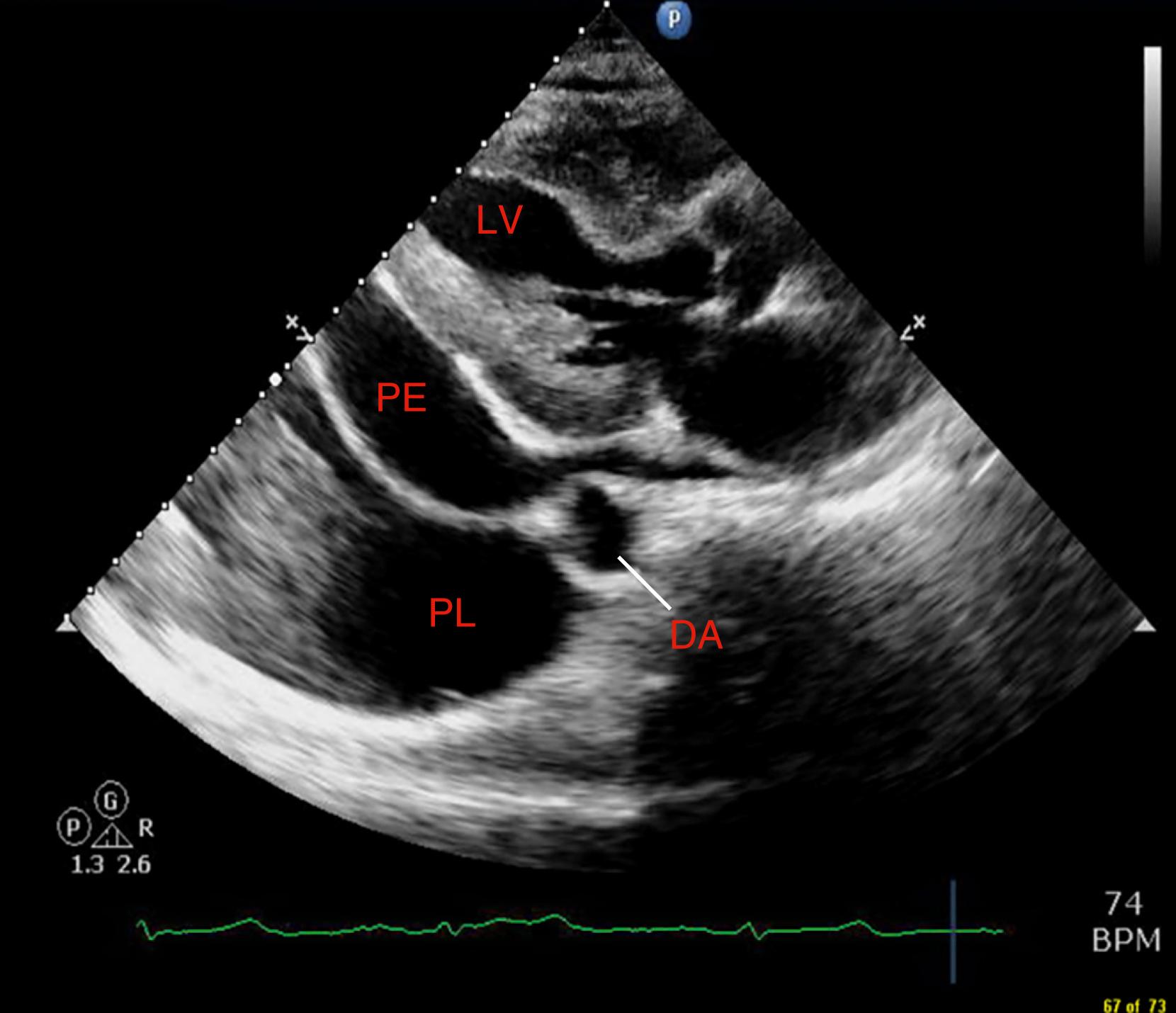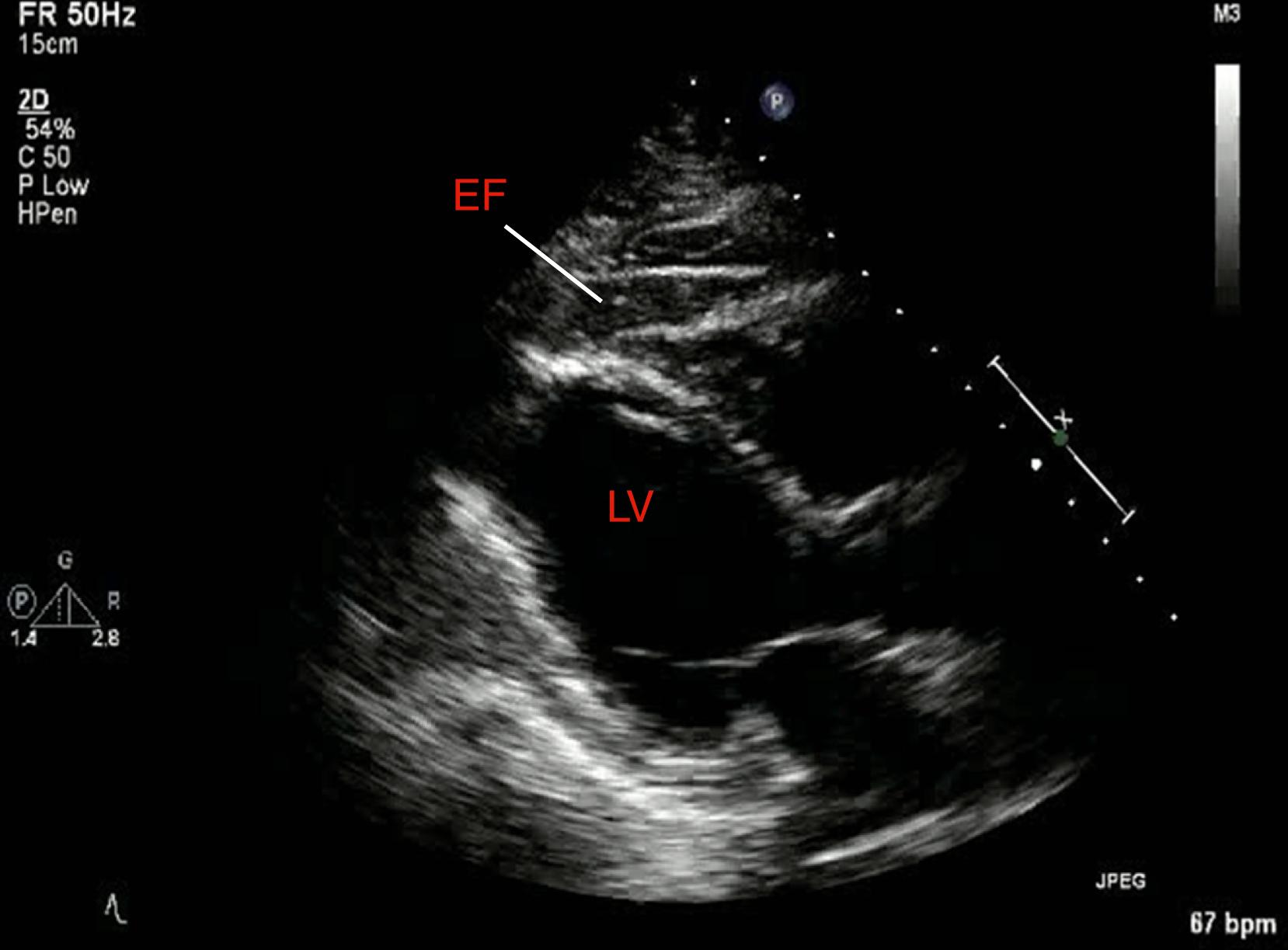Physical Address
304 North Cardinal St.
Dorchester Center, MA 02124
The authors acknowledge the coauthors of the preceding editions of the chapter on pericardial tamponade—Drs. Richard Kutnick, R. Parker Ward, and Roberto M. Lang—for providing the structure for the current update and the included echocardiography and Doppler illustrations.
The pericardium is a two-layered fibroelastic membrane or sac that surrounds the heart and proximal segments of the aorta, pulmonary artery, pulmonary veins, and vena cava. A small physiologic amount of fluid is present between the fibrous parietal layer and the single-cell-thickness visceral layer. The small volume of normal pericardial fluid plasma ultrafiltrate is usually less than 50 mL , and is believed to come from the visceral pericardium. Normal pericardial pressure is 0 to 3 mm Hg, varying with respiration. The pericardial space drains via lymphatics through both the thoracic duct and the right lymphatic duct. The pericardial space in normal health is more potential than actual, containing only enough fluid to allow for smooth sliding of the serosal layers over one another during cardiac motion. However, a wide variety of diseases affecting the pericardium can lead to an abnormal increase in pericardial fluid.
Accumulations of fluid within the pericardial space may be caused by transudate, exudate, hemopericardium, and pyopericardium. Table 121.1 describes some of the most common causes of pericardial effusions. The presence or absence of symptoms or signs of pericardial effusion depend on many factors, including the cause of the fluid, the size of the effusion, and most important from a hemodynamic standpoint, the rate of fluid accumulation. Typically, a small noninflammatory pericardial effusion is asymptomatic and may be discovered only incidentally when an imaging study (usually either echocardiography or chest computed tomography [CT]) is ordered for other reasons. Large pericardial effusions may also be asymptomatic if they develop slowly; however, large effusions can cause symptoms if associated with increased intrapericardial pressure (discussed later under Cardiac Tamponade) or if they cause mechanical compression of structures adjacent to the heart. Specifically, esophageal compression can cause dysphagia, bronchial or tracheal compression can cause cough, phrenic nerve compression can cause hiccups, recurrent laryngeal nerve compression can result in hoarseness, and lung compression or atelectasis can cause dyspnea. Various arbitrary definitions have been promulgated to define pericardial effusion size into small, moderate, and large categories. Small effusions are usually defined as 50 to 100 mL, moderate as 100 to 500 mL, and large as greater than 500 mL. It is important to note that there is often a poor correlation between the volume of pericardial fluid and hemodynamic effects.
Inflammatory
|
| Neoplastic |
Endocrine or Metabolic
|
| Trauma, Iatrogenic, or Surgery |
| Radiation Treatment |
Volume Overload States
|
| Myocardial Infarction |
| Idiopathic |
Echocardiography has long been considered the first-line imaging test to diagnose pericardial effusion. Echocardiography takes advantage of the different acoustic properties of pericardial fluid as compared with the myocardium and parietal pericardium because pericardial fluid is typically echolucent, and the myocardium and pericardial membrane are echo dense. The detection of pericardial effusion was one of the first clinically useful applications of echocardiography, which continues being the most practical way to diagnose, assess the severity of, and follow pericardial effusions.
Pericardial fluid, when trivial or small, tends to first accumulate posteriorly behind the left ventricle in the oblique sinus and is best imaged in the parasternal long-axis view. It is seen (when trivial) as an echolucent space between the posterior left ventricular (LV) myocardium and pericardial reflection only in systole. As the fluid volume increases, the echolucent posterior separation occurs in both systole and diastole. As the fluid accumulates to greater than 100 mL, it tends to become circumferential, and an echolucent space appears both anteriorly and posteriorly. Measuring the depth in millimeters of the echolucent separation of pericardial reflection from the myocardium or epicardium on two-dimensional (2D) echocardiography is an accepted semiquantitative way to size pericardial effusion ( Table 121.2 ).
| Trivial | Echolucent space <10 mm Seen only in systole |
| Small | Echolucent space <10 mm Seen in systole and diastole |
| Moderate | Echolucent space 10–20 mm |
| Large | Echolucent space >20 mm |
There are both normal anatomic variants (epicardial fat) and nonpericardial processes that can sometimes confuse and potentially mimic the echocardiographic appearance of pericardial effusion ( Table 121.3 ). As noted in Table 121.3 , left pleural effusion may also appear as an echolucent space posterior to the heart. However, the 2D parasternal long-axis view shows this fluid as posterior to the descending thoracic aorta, whereas pericardial fluid tracks anterior to the descending aorta ( Fig. 121.1 ). Pericardial cysts and LV pseudoaneurysms can also occasionally be mistaken for loculated pericardial effusions. Epicardial fat can appear as a relatively echolucent space most often anteriorly within the pericardial reflection. The stippled appearance of epicardial fat is often seen to move in unison with cardiac motion ( Fig. 121.2 ). Increased epicardial fat is typically seen in older adults, particularly in obese women.
| Pleural effusion |
| Epicardial fat |
| Left ventricular pseudoaneurysm |
| Pericardial cyst |


Video 121.2. Parasternal long-axis image demonstrating anterior epicardial fat (EF). Note the typical stippled appearance of the tissue.
Pericardial effusions are not always completely echolucent on echocardiography and may have varying degrees of echogenicity related to the presence of fibrin or clot, protein content, chyle, tumor cells, bacteria, and so on. The specific fluid density can be better defined sometimes with other imaging modalities such as CT and magnetic resonance imaging (MRI). However, the relative echogenicity on echocardiography should always be noted and characterized in the report because the fluid appearance (echolucent vs fibrin stranding and organization) can sometimes provide clues to the cause of the pericardial effusion and can also help decide whether drainage (if indicated) would be better accomplished with needle pericardiocentesis or surgically, with highly organized effusions most often requiring operative intervention because of loculation.
Become a Clinical Tree membership for Full access and enjoy Unlimited articles
If you are a member. Log in here